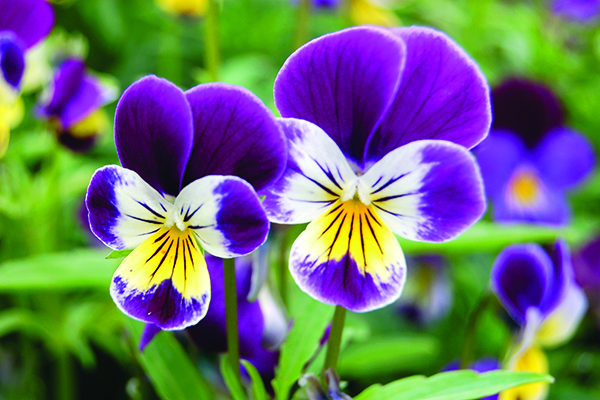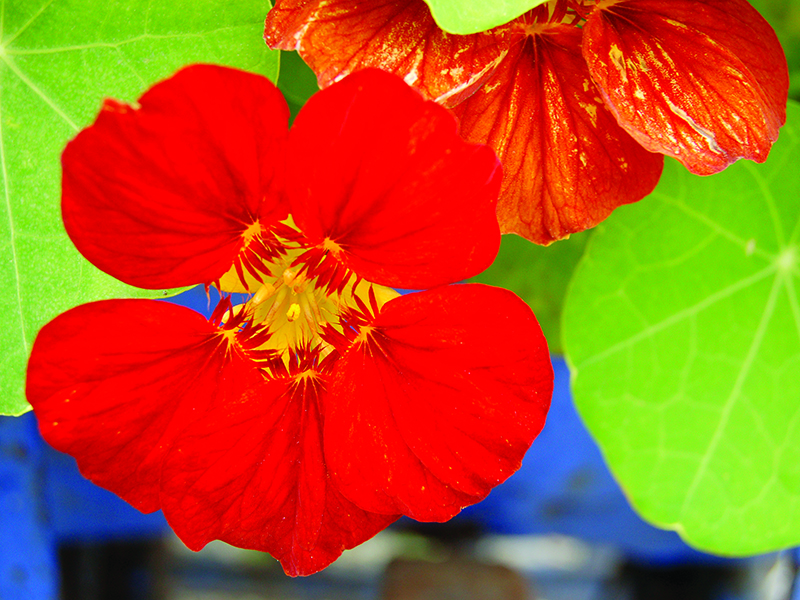Did you know fruits and vegetables are not the only edible things you can cultivate in your garden? For centuries, people have also enjoyed using a variety of flowers in culinary dishes.
You probably remember the taste of honeysuckle from childhood and have tried such flowers like hibiscus and chamomile in teas. But what about squash flowers battered in cornmeal and fried or daylily petals added to a salad mix? Have you sampled the wintergreen flavor of Johnny-jump-ups (at right) or the marshmallow taste of pineapple guava? Have you made pesto from nasturtium leaves or enjoyed the peppery taste of the plant’s blossoms (pictured below)?

These are just a few of the ways to enjoy edible flowers. A 2019 publication from NC State Extension titled “Choosing and Using Edible Flowers” makes the following additional recommendations, “Use fresh edible flowers as a garnish or include in a salad … Cook flowers in stir-fry dishes or stuff and bake them. Add minced flowers to cheese spreads, herbal butters, pancakes, crepes and waffles. Edible flowers can be candied; frozen in ice cubes to be added to beverages; made into jellies, jams, teas or wines, and included in vinegars for cooking, marinades or salad dressings.”
Before trying any edible flower, do your research. Make sure you are certain of what you are eating as not all flowers are edible, and some nonedible plants may look like or have a similar name to their edible counterparts. Additionally, eat flowers in moderation as some varieties can cause digestive and other health concerns in larger amounts.
“It’s best to introduce flowers into your diet one type at a time and in small quantities,” recommends the NC State Extension article. “Avoid pollen, which can affect the flavor and may cause an allergic reaction in some people, by removing all parts of the flower except the petals. Also remove the bitter white base of the petals from flowers such as chrysanthemums, dianthus, marigolds and roses.”
Pick flowers in the cool of the morning after the dew has evaporated, and always wash flowers thoroughly before eating them. Do not eat flowers found growing alongside the road or that have been sprayed with pesticides. Also, avoid eating flowers on plants that have been fertilized with animal manure.
For a list of more than 70 edible flowers, complete with pictures, flavor information and growing tips, check out the NC State Extension publication cited above by visiting https://content.ces.ncsu.edu/choosing-and-using-edible-flowers-ag-790.
(By Whitney Sherrill, Contributing writer, Home, Garden & Garage magazine 2021)

